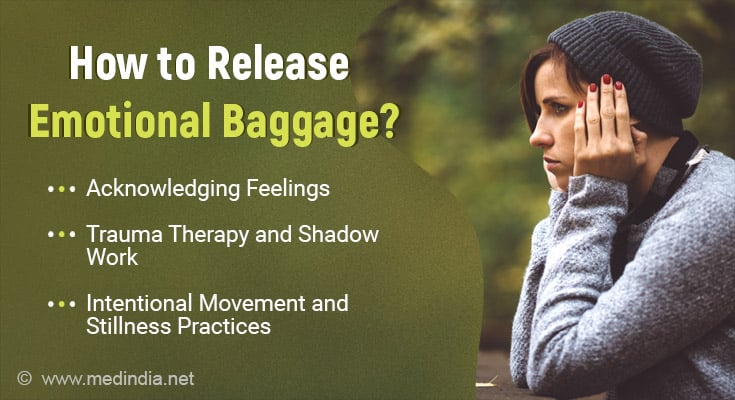- Trapped emotions may manifest physically, with tender spots leading to emotional release during activities like yoga or massage
- Trauma disrupts emotional processing, potentially storing emotions in the body, impacting mental and physical health
- Emotional repression can lead to muscle tension, pain, and health issues. Techniques like acknowledging feelings, trauma work, and intentional movement help release trapped emotions
The weight of “emotional baggage” is a burden many carry, stemming from past trauma or negative experiences. These unprocessed emotions can subtly dictate our lives, affecting everything from our thoughts and reactions to stress, to our physical health and relationships. The term itself paints a vivid picture of the unseen load we carry, manifesting in ways we may not always recognize (1✔ ✔Trusted Source
Emotional Dysregulation: A Trauma-Informed Approach
).
Trauma and Trapped Emotions
Trauma is an unfortunate companion in many of life’s journeys, impacting our
How to Promote Emotional Healing
The impact of unprocessed emotions isn’t confined to the mind; it extends to the body, often manifesting in discomfort and various ailments. But there’s hope. Through acknowledgment of our feelings, engaging in trauma therapy, delving into shadow work, and embracing intentional movement and stillness practices, we can begin the journey of emotional release and healing.
Acknowledging Feelings
The first step towards healing is acknowledging the presence of our emotions. This simple act of recognition begins to loosen the grip of emotional baggage, allowing us to confront it with courage and vulnerability. Whether through journaling, talking with a therapist, or simply sitting with our emotions, acknowledging them is a powerful act of self-awareness.
Trauma Therapy and Shadow Work
Trauma therapy provides a safe space to explore and process past traumas, guiding us towards healing and resolution. Similarly, engaging in shadow work allows us to confront the parts of ourselves we’ve buried out of shame or fear. By shining a light on these hidden aspects, we can integrate them into our sense of self, fostering wholeness and acceptance.
Intentional Movement and Stillness Practices
Intentional movement, such as yoga, dance, or tai chi, offers a pathway to release stored energy and tension trapped within our bodies. These practices not only promote physical well-being but also create space for emotional release and self-expression. Likewise, stillness practices like meditation and deep breathing allow us to quiet the noise of the external world, turning inward to connect with our innermost selves.
In conclusion, while the physical manifestations of trapped emotions may be evident, it’s the intricate workings of our brain’s emotional processing that truly drive the journey towards healing. Through a combination of acknowledgment, therapy, introspection, movement, and stillness, we can begin to unravel the layers of emotional baggage, reclaiming our sense of self and fostering emotional well-being.
“By addressing and releasing trapped emotions, you pave the way for emotional healing and overall well-being.” As the quote suggests, by bravely addressing and releasing trapped emotions, we open the door to emotional healing and overall well-being. The journey may be challenging, but the rewards are immeasurable—freedom from the weight of our past and the opportunity to embrace life with newfound clarity and resilience.
Reference:
- Emotional Dysregulation: A Trauma-Informed Approach – (https:pubmed.ncbi.nlm.nih.gov/33743945/)
Source-Medindia



